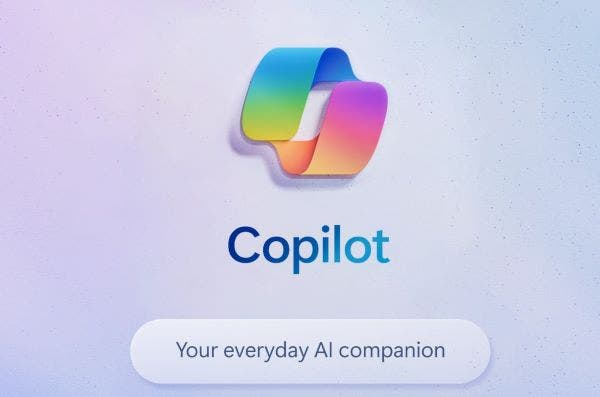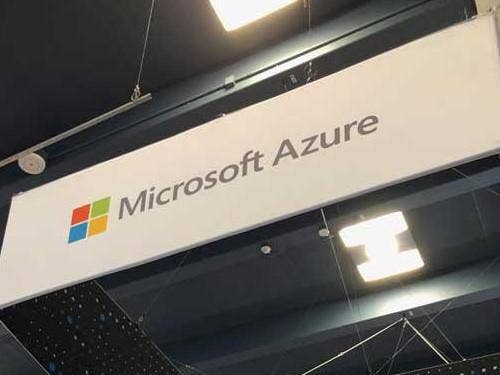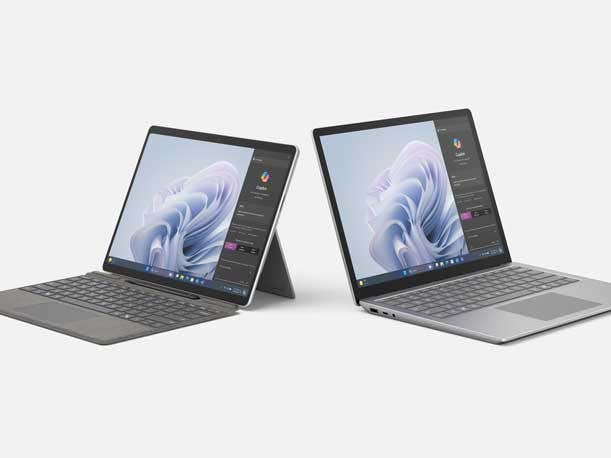Microsoft Earnings Preview: 5 Things To Know
AI, Azure and security are just some of the biggest topics expected to come up Thursday on the company’s third fiscal quarter earnings call.

Updates on Microsoft’s artificial intelligence and Copilot offerings. Growth in the cloud and Azure business. And the tech giant’s position in the ever-competitive security market.
These are some of the biggest subjects that executives at the Redmond, Wash.-based vendor are expected to touch on during Microsoft’s quarterly earnings call Thursday, when Chairman and CEO Satya Nadella shares revenue numbers for Microsoft’s third fiscal quarter ended March 31.
Analysts will likely look to Microsoft not only as an indicator of the health of the emerging AI field, but as a bellwether for overall corporate IT spending.
[RELATED: Microsoft Exec: M365, O365 Suites With Teams Buyable Until Aug. 1]
Microsoft Third-Quarter Earnings Preview
An April 19 report from Morgan Stanley called IT budget growth in 2024 “largely stable sequentially at +3.2% (vs. +3.4%/+3.3% in Q3/Q4), potentially feeding into the ‘not worse, but not yet meaningfully better’ narrative.”
As far as the performance of the technology economy overall, investment firm KeyBanc said in a report on April 19 that a survey of VARs “was generally more negative than positive.”
“The lowest number of respondents made or exceeded their goal in about 4 years, more people think the macro environment got worse than those that thought it improved, and the timeline for a recovery in budgets was pushed out further, more toward 2025,” according to KeyBanc.
Microsoft was a bright spot in the survey, with results that showed “90%+ of the Microsoft-specific VARs in the survey met or exceeded their goal, the highest amount in a number of quarters.”
In an April 18 report from Bank of America, the firm put its third fiscal quarter revenue estimate at $60.5 billion, up 14 percent year over year ignoring foreign exchange.
“We expect 1% upside to our estimate for Azure growth of 28.0% cc, given positive system integrator partner feedback suggesting (1) stable, healthy migration of new workloads to the cloud platform; (2) relative strength in the Microsoft security stack; and (3) ramping usage of Azure AI and data services such as Open AI Services, Azure AI and Fabric,” according to Bank of America.
Here are other things to know headed into Microsoft’s third fiscal quarter earnings Thursday.

Signs Of Microsoft AI, Copilot Traction
In a Tuesday report from Wedbush, the investment firm said it has spoken with Microsoft customers and partners to gauge Copilot uptake and sees “an acceleration of adoption for generative AI and Copilot activity which in turn is catalyzing more Azure cloud deal flow for Nadella & Co. with major momentum heading into the next 6 to 12 months as AI use cases explode across the enterprise landscape.
“Based on our recent work in the field we believe the next 3 years over 70% (vs. our original 60% estimate) of its MSFT installed base will ultimately be on this AI driven functionality for the enterprise/commercial which changes the landscape for Nadella & Co going forward,” according to Wedbush. “While AI use cases will build markedly in FY24 its clear FY25 for Redmond remains the true inflection year of AI growth with pricing, beta customers, and use cases all being rolled out over the next 3-6 months.”
Wedbush estimates that Copilot deployments “could add another $25 billion-$30 billion to Redmond's top-line by FY25.”
“We estimate for every $100 of cloud Azure spend with MSFT the last few years there is an incremental $35-$40 of AI spend for Nadella & Co. looking ahead,” according to Wedbush. “Our thesis remains that the cloud and underlying Office 365/Windows ecosystem is going to comprise a bigger piece of the Redmond top-line going forward and will ultimately spur growth and margins into the rest of FY24/FY25.”
KeyBanc published a report Monday using data from its first-quarter 2024 VAR survey. The investment firm said it remains “optimistic on Microsoft's ability to monetize generative AI with Copilot for M365 seeing the most interest among Microsoft's set of generative AI offerings,” but practically speaking, “the data hasn't budged much yet, with none of our contacts pointing to significant generative AI rollouts into production.”
The biggest concern for AI adoptions was cost, according to KeyBanc. “We did see almost all other AI concerns increase q/q including lack of use cases, security issues, lack of auditing/monitoring, and not being enterprise ready. Being optimistic, we do want to highlight the increased percent of customers undergoing Microsoft Copilot pilots or solution experimentation, which hopefully should translate to rollouts over time.”

AI’s Effects On Microsoft Capex
In a report Monday from Melius Research, the investment firm said that Microsoft executives may even talk down Copilot revenue. Microsoft’s Copilot investment is for long-term importance rather than short-term revenue, according to the firm.
“We think sales are ok and interest is high but don’t expect any miracles here,” according to the Melius report. “We think Copilot as more important as an interface and as an aggregator of other AI tools.”
AI will likely prove a contributor to higher Microsoft capital expenditures. “Capex is expected to be 43B according to consensus, up 53% year over year and we anticipate significant growth into FY25 to meet AI initiatives,” according to Melius.
On April 19, Morgan Stanley published a report drawing on data from its own survey of CIOs and checks with Microsoft channel partners. The investment firm called Microsoft “the clear beneficiary of incremental AI spend with a net 38% of CIOs expecting it to be the top AI budget share winner over the next 3 years.” About the same share of CIOs called Microsoft “the top AI budget share winner in 2024.”
Morgan Stanley said it models a $5 billion contribution to fiscal year 2025 from Microsoft AI and expects more than $50 billion in Copilot revenue by Microsoft’s 2029 fiscal year even if the vendor only penetrates one-third of total paid seats. Broader GenAI elements need “more time to develop and work through enterprise purchasing cycles,” according to the firm.
The report’s analysts said they are concerned for “the potential for lack of data points on the Office 365 Copilot launch” and more meaningful Copilot contribution to the second half of calendar year 2024 and calendar year 2025.
But the firm noted that “expectations for the magnitude and timing of the Microsoft 365 Copilot cycle have come down as feedback suggests the product has some further development remaining to unlock potential efficiency and given enterprise adoption cycles may take longer than originally modeled.”
More than 70 percent of CIOs indicated “direct impacts to their investment priorities surrounding AI/ML technologies … an uptick from 68% in 4Q23 and 66% in 3Q23,” according to Morgan Stanley. “Additionally, AI/ML has solidified its positioning at the top of the CIO priority list in 1Q24, with ~14% of CIOs citing it as a top priority … 39% of CIOs expecting to see Microsoft as the top AI budget share winner in 2024 … and 38% over next 3 years.”
The firm estimates that M365 Copilot will help drive Microsoft's productivity and business processes (PBP) segment revenue from about $78 billion in fiscal year 2024 to $130 billion in fiscal year 2029.
In Office 365 Commercial, Copilot should contribute $5 billion in fiscal year 2025, representing 6 percent of overall paid seat penetration. That number could grow to $23 billion in fiscal year 2029, representing 18 percent penetration, according to Morgan Stanley.
Bank of America’s April 18 report put the PBP segment revenue estimate at $19.5 billion, up 11 percent year over year ignoring foreign exchange. That estimate comes from not only channel partner feedback on Copilot, but also better average selling prices on sustained strength of E3 and E5 licenses.
“Channel feedback suggests some uptick in Copilot activity, primarily in the pipeline, but also early adoption,” according to Bank of America.

Microsoft Azure, Cloud Growth
Wedbush in its Tuesday report predicted “upside across the board given deal strength this quarter with Azure growth close to 30%.” Azure grew 28 percent year over year last quarter.
KeyBanc’s report on Monday also called Microsoft a beneficiary of more workloads moving to the cloud given the vendor’s size in the market. Microsoft is often considered the No. 2 cloud provider after Amazon Web Services.
The firm’s VAR survey showed that cloud workload migration was “consistent,” with an uptick in enterprise resource planning (ERP) workloads. “The types of workloads being deployed in public cloud consistently show up as Tier 2 workloads such as backup/archive and email use cases, but Tier 1 improved 10 points to 26% of responses,” according to the report.
The survey actually showed a downward trend in those second-tier workloads since last year, losing 12 points and moving to 53 percent of responses in the latest survey, according to KeyBanc.
A report from KeyBanc on April 19 said that if Microsoft hits 30 percent Azure growth, “The mix of how much comes from AI vs. non-AI will be less important.”
“If it isn't hit, then the spinning will begin and a positive or negative story can be told on either side,” according to KeyBanc.
The KeyBanc survey showed a material decrease in “long-term cloud workload expectations”— however, a change in survey response options could have caused this, according to the firm.
Anecdotally, KeyBanc has heard of “a rebellion against public cloud” because of costs. “We have heard of some repatriation of workloads back into private data centers.”
In its Monday report, Melius said that its “checks for Azure are good” with Microsoft “gaining share and deftly managing partnerships with CoreWeave (helps AI figures) and Oracle (helps overall Azure).”
“Consensus estimate for 4% sequential growth for Azure should be conservative,” according to Melius.
Morgan Stanley said in its April 19 report that “an accelerating Azure line should shore up confidence in a massive long-term opportunity” with Microsoft AI as “investor patience for top-line results has worn thin.”
“Microsoft's leading position to accrue significant share of the IT wallet on the back of a continued migration to Public Cloud and the ramping innovation cycle powered by Generative AI is abundantly clear,” according to Morgan Stanley. “This strong positioning is evident in the 3.5% points of share gained within the overall commercial software market over the past 5 years.”
The firm estimates Microsoft Cloud to grow 22 percent, about $35 billion. It predicts Office 365 Commercial growth of about 15 percent year over year, down modestly from 16 percent the prior quarter.
Morgan Stanley also assumes consumption-based Azure workloads to grow at a 24 percent compound annual growth rate (CAGR) between fiscal years 2024 and 2029. That, plus a 61 percent CAGR for the same period on incremental Azure AI workloads drives a forecast for $210 billion in consumption-based Azure. Adding in server products, enterprise services and other revenue in Microsoft’s “intelligent cloud” segment, the firm forecasts $257 billion in fiscal year 2029 with a CAGR of about 20 percent for the segment.

Microsoft Competition In Security
The Monday report from KeyBanc showed a surprise recipient of Microsoft incremental spend was the vendor’s security offerings.
Security “saw a 19% increase from 4Q23 despite the late slew of headlines around Microsoft products being hacked or exploited,” according to KeyBanc. “The breadth of Microsoft's security solutions is certainly drawing customers in as Microsoft's security business doubled in revenue last year to over $20B. We do worry customers will lose confidence in Microsoft as a security vendor if the hacks and breaches continue, but as of now, it doesn't appear that is the case.”
KeyBanc’s April 17 report on its VAR survey went into more details on Microsoft’s position in the security industry. The firm called Microsoft’s “competitive positioning in security about steady” quarter over quarter, with Microsoft the “#3 top performing vendor, #2 consolidator, #3 best positioned SASE vendor, #1 in IAM, #2 in cloud security, #3 in endpoint, #2 in SIEM.”
Cloud-native application protection platform (CNAPP) and email security were called Microsoft’s strongest security areas.
Interestingly, more than 70 percent of survey respondents said they expect customers to buy a GenAI product from a security vendor in the second half of 2024 and into 2025.
Back on April 1, a Bank of America report credited Microsoft security as “the primary driver that motivates customers to upgrade from E3 to E5” licenses.

Pressure On PCs, Hardware
In its Monday report, Melius Research predicted that trends in Microsoft’s PC, traditional server and “more personal computing” segment could “hinder some upside” and strength in AI and Azure.
Morgan Stanley’s April 19 report said the firm expects on-premises server products growth of about 2 percent year over year, in line with Microsoft expectations.
The firm predicts flat Windows OEM growth year over year, in line with Microsoft expectations, but data shows possible food news for devices later in the year.
“Industry level PC unit data suggests modest upside to Morgan Stanley and Consensus estimates for Windows OEM revenue growth in CY 2H24 as a device refresh cycle and the end of support for Windows 10 are expected to help drive a sales recovery,” according to the firm.
Bank of America’s April 18 report says the firm expects weaker PC demand in the quarter. “DC reported preliminary Q1 PC growth of +2% y/y versus its prior expectation for +4% y/y when Microsoft provided guidance,” according to the firm.